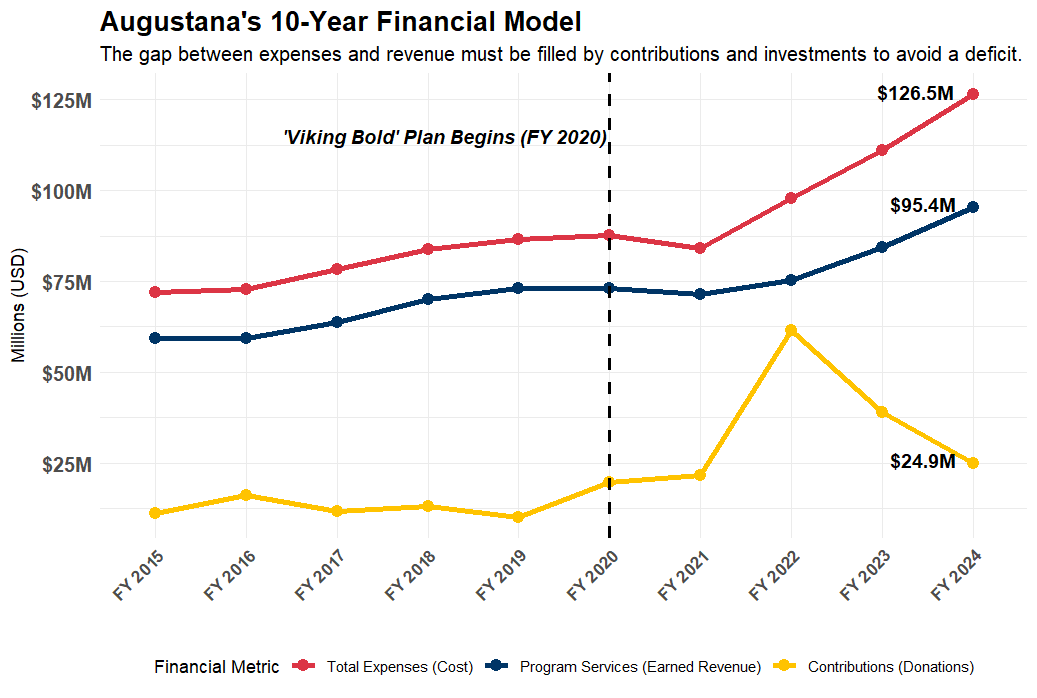J1 complicates registration

As spring registration began on Monday, Nov. 17, Augustana’s campus community took on all the usual stress — and a bit more.
The university’s recent software transition from Jenzabar CX to Jenzabar 1 (J1) has complicated matters for students, faculty and administrators alike. Moreover, campus also faced the challenges brought by a new course numbering system and registrants under two different sets of core requirements.
Dean of the School of Music and Vice President of Innovation Pete Folliard said that he received an email from Donovan DeJong — IT’s director of management information systems — that summed the situation up well.
“It will get better, but each new event in our normal yearly cycle will likely have extra stress for the foreseeable future,” DeJong wrote to Folliard.
Folliard agreed that bumps in the road are expected.
“So billing for spring term, setting up next year’s budget, audit, end-of-year tax stuff — since it will all be new, my expectation is that it will be higher stress and require more time than previously,” Folliard said. “It would be like if you built a new house and it was your first winter.”
He also spoke highly of campus teams working to make the changes happen — none more than the Registrar’s Office.
Registrar Ann Kolbrek stepped into her position last spring. From Oct. 23 to Nov. 4, her team worked with Jenzabar support to identify issues.
“Most people probably saw and were frustrated that our office was closed, but we were in it just literally mining for problems,” Kolbrek said. “Just reviewing what data doesn’t look right, knowing that it’s not going to be perfect, that we couldn’t touch every single student.”
The week before registration, the Registrar’s Office sent several emails to students, guiding them through the new and unfamiliar process. This year, the four registration days began at 8 a.m., which Kolbrek said was an intentional choice to support students from the moment registration opened.
In the future, she and her staff hope to open it at 7 a.m. so students can register without any interference to 8 a.m. classes. For now, her team set up a table in the Morrison Commons each afternoon where students could ask questions.
“The software’s fine,” junior elementary education major Natalie Inskeep said. “The fact that it was a week before registration, a week or so, was very stressful.”
Freshman psychology and social work double major Hallie Carlson was most concerned about not having access to her academic plan.
“As someone who appreciates a four-year plan, not being able to somewhat make that is super-duper stressful because I want to make sure I’m including everything that I need because I have a lot that I’m doing,” she said.
Kolbrek acknowledged a couple of issues that her office is already aware of regarding how data transfers from system to system. Transcripts often don’t carry over and appear the same way they did in the old software, and prerequisites have also caused some hiccups.
The student body is also split between two sets of core requirements: Upperclassmen are largely under the SOPHIA system, while many underclassmen use Via Viking, which was approved in fall of 2024.
Last year also saw the three-digit course numbering system change to a four-digit one. In Kolbrek’s opinion, the course re-numbering is “the most complicated change we made,” since it involves making J1 recognize classes that are labeled two different ways as the same course.
For many faculty advisers, this means re-memorizing course designations on top of learning Via Viking. Michelle Gierach, an associate professor of nursing who co-wrote the Via Viking proposal, agreed that the four-digit system can be tricky.
Gierach manages over 30 advisees, a process that she has been working through since early October. She recounted pulling a transcript for a student and seeing 19 credit hours in his previous spring semester, which she didn’t think was the case. When she looked closer, she realized that the new system grouped interim and spring credits together.
“I had to be like, ‘I’m so sorry, give me patience because I’m not sure how it’s totaling up your credits.’ Like, I have to do a deeper dive,” Gierach said. “And sometimes that’s hard to do in the moment when you’re trying to just keep things running for everybody.”
She said that she looks forward to seeing what audits look like under J1, as the previous system did not always process transfer credits or prerequisite courses correctly. She called the new audits “much clearer” despite not being entirely up to date.
Patrick Hicks, chair of the English and journalism department, expressed some frustration with J1’s current level of function: He cannot currently see how many students are registering for his department’s classes.
However, he’s waiting until registration week is over to see faculty issues addressed.
“My attitude is, if I am experiencing these problems, every other faculty member on campus is experiencing it, and I always trust my colleagues to solve problems,” Hicks said.



